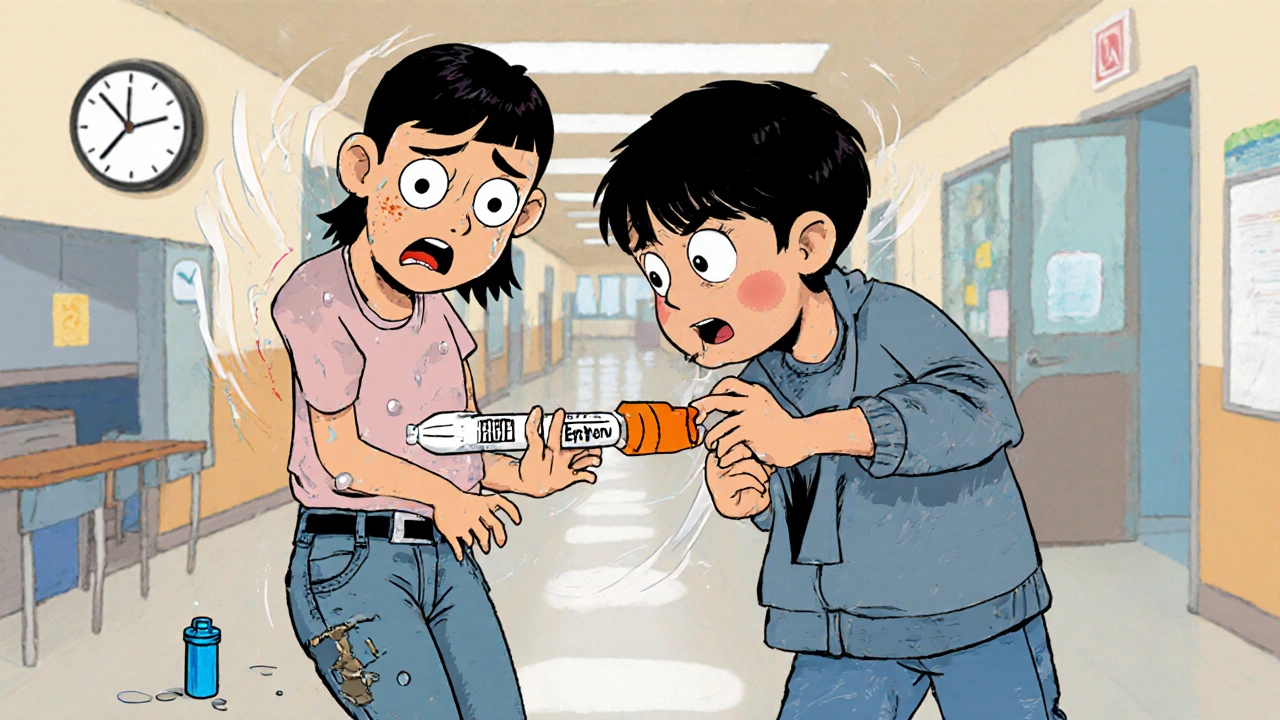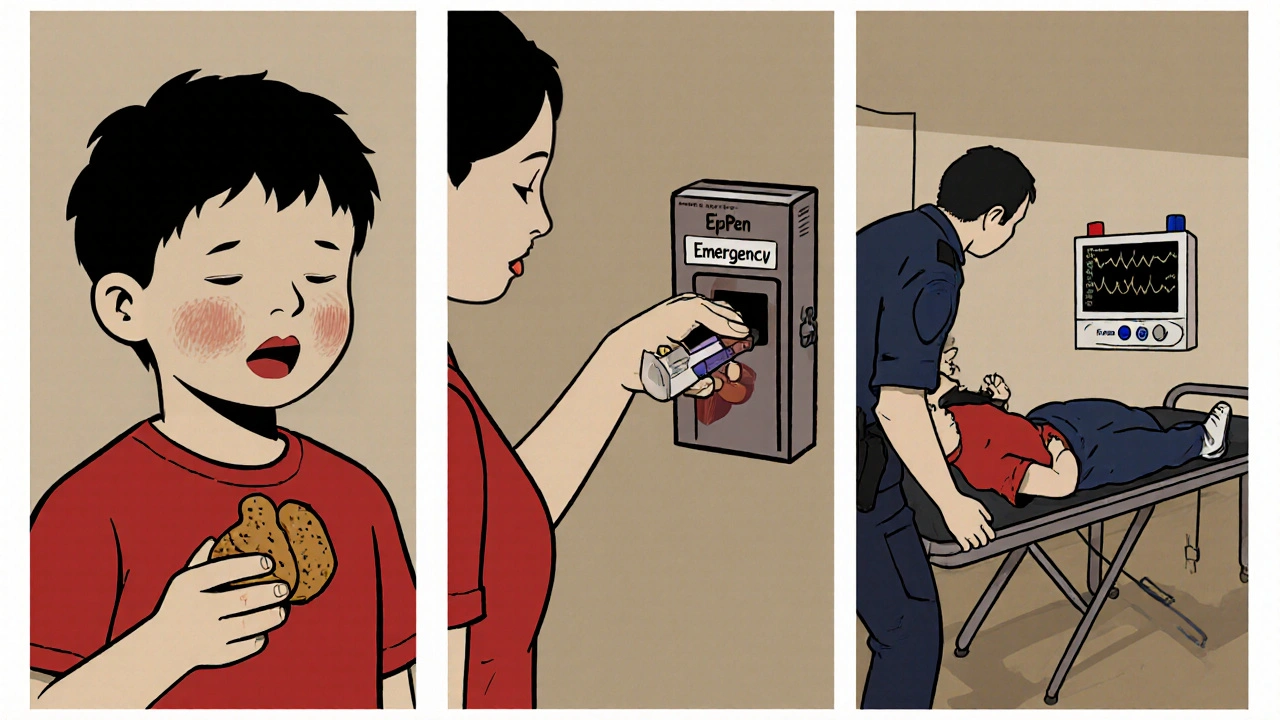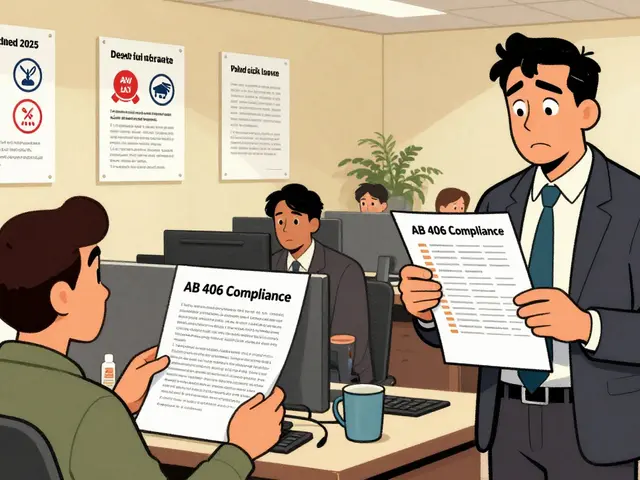
When your body goes into anaphylaxis, every second counts. Swelling in your throat. Trouble breathing. A sudden drop in blood pressure. Your heart racing. These aren’t just scary symptoms-they’re signs your life is in danger. And the only thing that can stop it in time is epinephrine, delivered fast and correctly. If you or someone you care about has severe allergies, knowing how to use an epinephrine auto-injector isn’t optional. It’s survival.
What Happens During Anaphylaxis?
Anaphylaxis isn’t a bad rash or a stuffy nose. It’s a full-body allergic reaction that can turn deadly in minutes. Common triggers include peanuts, shellfish, bee stings, latex, and certain medications. Symptoms show up fast: hives, swelling of the lips or tongue, wheezing, dizziness, nausea, or a feeling that something is terribly wrong. The body releases chemicals that cause blood vessels to leak and airways to tighten. Without epinephrine, oxygen can’t reach your brain. Your heart can stop.Epinephrine works by reversing these effects. It tightens blood vessels to raise blood pressure, opens up airways so you can breathe, and helps your heart keep pumping. Studies show giving epinephrine within 5 to 15 minutes of symptoms starting cuts the chance of dying by 75%. Waiting for antihistamines or an ambulance? That’s a gamble you can’t afford.
Which Auto-Injectors Are Available?
There are several brands, each with small differences-but they all do the same critical job.- EpiPen is the most common. It’s a simple, spring-loaded pen with a gray body and orange tip. Comes in two strengths: 0.15mg for kids 33-66 lbs, and 0.3mg for anyone over 66 lbs.
- Auvi-Q has a voice-guided system that talks you through each step. It’s more expensive but helps if you panic during a reaction.
- Adrenaclick is cheaper-about one-third the price of EpiPen-but requires you to pull off two caps and press a button to activate the needle.
- Neffy is the new needle-free option. You spray it into one nostril. It works for most cases but isn’t as reliable if the person is breathing through their mouth or has a stuffy nose.
Most people in the U.S. use EpiPen. But if cost is an issue, Adrenaclick is a solid alternative. If you’re nervous about needles or forget steps under stress, Auvi-Q’s voice prompts can make all the difference. Neffy is promising, but it’s not a perfect replacement yet.
Step-by-Step: How to Use an Epinephrine Auto-Injector
There’s no room for hesitation. Practice makes perfect, but here’s what to do when it’s real:
- Recognize the signs. Don’t wait for all symptoms. If someone has trouble breathing, swelling, or feels like they’re going to pass out-act now.
- Remove the safety cap. For EpiPen, pull the blue cap straight off. For Auvi-Q, pull the red tab. For Adrenaclick, remove both the gray and black caps.
- Place it on the outer thigh. This is the best spot. You can inject through clothing-jeans, leggings, even thick pants. No need to expose skin. Aim for the middle of the outer thigh, halfway between hip and knee.
- Press firmly and hold. Jab it hard into the thigh until you hear a click. Keep it pressed for 3 full seconds. This ensures the full dose goes in. Don’t pull it out early.
- Massage the area. After removing the device, rub the injection site for 10 seconds. This helps the medicine absorb faster.
- Call 911 immediately. Even if they feel better after the shot, they still need emergency care. Anaphylaxis can come back hours later-a second reaction called biphasic anaphylaxis. You’ll need monitoring in a hospital.
- Give a second dose if needed. If symptoms don’t improve after 5-10 minutes, or if they get worse, use a second auto-injector. Keep one with you at all times.

Common Mistakes (And How to Avoid Them)
Even people who’ve trained with these devices mess up-often in the heat of the moment.
- Not holding it long enough. Most people pull it out after 1 or 2 seconds. You need 3 seconds. That’s longer than you think. Count it out: “One-Mississippi, Two-Mississippi, Three-Mississippi.”
- Injecting in the wrong place. Avoid the buttocks, belly, or arms. The outer thigh has the most muscle and blood flow. Injecting elsewhere delays absorption.
- Forgetting to call 911. Some think, “They’re fine now,” and skip the hospital. That’s dangerous. Epinephrine wears off in 10-20 minutes. The reaction can return.
- Accidental injection. EpiPen’s orange tip is sensitive. People have accidentally triggered it while fumbling in a purse or pocket. Always keep it in its case, and never carry it loose.
- Using expired devices. Epinephrine loses potency over time. Check the expiration date every few months. If it’s discolored (pink or brown) or has particles in the liquid, throw it out.
Training and Practice
You wouldn’t drive a car without a license. Don’t handle a life-saving device without training.
Practice with a trainer device-these look like the real thing but don’t contain medicine. They come with most prescriptions. Use them once a month. Practice on a pillow or a friend’s leg. Get comfortable with the motion. Teach your kids, your partner, your coworkers.
Schools, workplaces, and daycare centers should have at least one device on hand-and staff should be trained. In Australia, schools are required to have epinephrine available, and many run annual drills. If your child’s school doesn’t, ask why. You have a right to expect them to be prepared.
Storage and Replacement
Epinephrine doesn’t like extreme heat or cold. Don’t leave it in your car on a hot day. Don’t freeze it. Keep it at room temperature-between 15°C and 30°C (59°F-86°F). A pocket or purse is fine. A glove compartment? Not so much.
Replace your device before it expires. Most last 18 months. Some pharmacies offer discount programs or coupons. If you’re paying over $300 out of pocket, ask your doctor about patient assistance programs. Some manufacturers cover 90% of the cost for qualifying families.

What to Do After the Injection
After you give the shot:
- Keep the person lying flat. If they’re vomiting or having trouble breathing, turn them gently onto their side.
- Loosen tight clothing. Don’t let them stand or walk.
- Stay with them. Don’t leave them alone.
- Give them water if they’re conscious and not having trouble swallowing.
- Hand over the used auto-injector to paramedics. They’ll need to know what was given and when.
Even if they seem fine, don’t skip the ER. They need to be monitored for at least 4-6 hours. Anaphylaxis can rebound-sometimes worse than before.
Real Stories, Real Consequences
A mother in Sydney told her story: Her 7-year-old had a peanut reaction at school. The nurse grabbed the EpiPen but panicked. She didn’t remove the blue cap. The child turned blue. It took 12 minutes before someone else figured out what was wrong. The child survived, but spent three days in intensive care.
Another family used Auvi-Q. The voice guide said, “Press firmly against the outer thigh. Hold for three seconds.” The dad, shaking, followed every word. His daughter’s breathing improved in 90 seconds. They got to the hospital in 10 minutes. She was home by dinner.
It’s not about being brave. It’s about being ready.
Final Reminder: Speed Saves Lives
Epinephrine auto-injectors aren’t just medical devices. They’re lifelines. And the only thing more dangerous than having one is not knowing how to use it.
Practice. Check the expiration date. Keep it accessible. Teach everyone around you. And if you ever doubt whether to use it-use it. The side effects-racing heart, shaking, feeling scared-are temporary. The consequences of waiting? Not worth the risk.
You don’t need to be a doctor. You just need to act.
Can I use an epinephrine auto-injector on someone else?
Yes. If someone is having an anaphylactic reaction and has their own auto-injector, you can use it-even if it’s not prescribed to you. In most places, including Australia and the U.S., Good Samaritan laws protect you if you act in good faith to save a life. Don’t wait for permission. Act now.
What if I accidentally inject myself?
If you accidentally inject yourself in the finger, hand, or foot, go to the ER immediately. Epinephrine in these areas can cause severe tissue damage or reduced blood flow. Call emergency services and tell them you’ve had an accidental injection. Don’t wait for symptoms. Even if you feel fine, get checked.
Can I reuse an auto-injector?
No. Auto-injectors are single-use only. The needle is designed to retract after use, but even if it doesn’t, the device won’t deliver a second dose. Always carry two. Never rely on a used device.
Is Neffy better than EpiPen?
Neffy is a good alternative for people afraid of needles, but it’s not always as reliable. It works well in 81% of cases, but if the person has a stuffy nose, is breathing through their mouth, or doesn’t spray correctly, it may not work. EpiPen has a 98.7% success rate when used properly. Neffy is a useful tool, but EpiPen and similar injectors remain the gold standard.
Should I carry two auto-injectors?
Yes. At least one should be carried at all times. Many people keep one at home, one at work, and one in their bag. A second dose may be needed if symptoms return. The American College of Allergy, Asthma & Immunology recommends carrying two for everyone with a history of severe reactions.
Can children use epinephrine auto-injectors?
Yes, but the dose depends on weight. Children under 66 lbs (30 kg) should use the 0.15mg version. Older children and adults use 0.3mg. Many schools train children to self-administer under supervision. Practice with a trainer device helps build confidence. Don’t assume a child can’t handle it-many do, especially with proper training.
13 Comments
Charity Peters
November 29, 2025 at 04:46 AM
My niece had a reaction at the mall last year. Nurse grabbed the EpiPen but didn’t pull the cap off. Took 10 minutes for someone else to figure it out. She’s fine now but I still get shaky thinking about it.
John Kang
November 30, 2025 at 12:45 PM
Used to think these were overhyped until my buddy went into anaphylaxis at a BBQ. We used his Auvi-Q. The voice guide saved us. He was breathing normal in 90 seconds. Just do the damn thing. Don’t overthink it.
Bob Stewart
November 30, 2025 at 13:58 PM
Epinephrine’s mechanism of action is mediated by alpha and beta-adrenergic receptor agonism resulting in vasoconstriction bronchodilation and increased cardiac output. Delayed administration correlates with increased mortality. The 5-15 minute window is evidence-based and non-negotiable.
Cindy Burgess
November 30, 2025 at 23:11 PM
Why is this even a thing? Why aren’t hospitals just better equipped? Why do we rely on random people with pens in their pockets to save lives? This is a systemic failure dressed up as personal responsibility.
Samantha Stonebraker
December 1, 2025 at 03:07 AM
I used to be terrified of needles. Then I started practicing with trainer pens on my thigh while watching Netflix. Now I can do it blindfolded. It’s not about courage. It’s about muscle memory. Do it until it’s automatic.
Sarah Khan
December 1, 2025 at 15:09 PM
We treat epinephrine like a last resort when it should be the first instinct. We’re taught to wait for symptoms to escalate but the body doesn’t wait for our hesitation. The real tragedy isn’t the reaction-it’s the delay. We’ve normalized fear over action.
raja gopal
December 2, 2025 at 23:09 PM
My cousin in Delhi uses Adrenaclick because EpiPen costs more than his monthly rent. He carries two. He trained his whole family. He doesn’t talk about it. He just does it. That’s quiet heroism.
Faye Woesthuis
December 4, 2025 at 09:21 AM
If you don’t have two injectors you’re irresponsible. If you don’t know how to use one you’re dangerous. If you’re still debating whether to use it you’re already too late.
ka modesto
December 4, 2025 at 16:56 PM
Just had a quick question: Does Neffy work for kids under 30 lbs? The docs said it’s only approved for 12+ but I’ve got a 2-year-old with peanut allergy. Any real-world experience?
Suryakant Godale
December 6, 2025 at 10:47 AM
While the efficacy of Neffy in nasal mucosal absorption is statistically significant, its reliability is contingent upon optimal physiological conditions including patent nasal passages and proper spray technique. In contrast, intramuscular delivery via auto-injector remains the gold standard due to consistent pharmacokinetics.
Simran Mishra
December 8, 2025 at 01:14 AM
I remember when my daughter had her first reaction at the birthday party. Everyone was laughing, thinking it was just a silly rash. I screamed for the EpiPen and my sister froze. I had to rip the cap off with my teeth because she was shaking so bad. I held it for three seconds like they said. I counted. One Mississippi. Two Mississippi. Three. And then she looked at me like she’d never seen me before. And I knew. I knew I’d saved her. And I knew I’d never be the same. I still wake up some nights wondering if I did enough. If I should’ve been faster. If I should’ve trained harder. If I should’ve carried more. I carry three now. One in my bra. One in my purse. One in my coat pocket. Because I will not let another child die because someone was too scared to pull a cap off.
Kelly Library Nook
December 9, 2025 at 11:36 AM
The article neglects to mention that epinephrine auto-injectors are not FDA-approved for intravenous use. Improper administration, particularly in patients with cardiovascular comorbidities, may induce arrhythmias or myocardial ischemia. This omission constitutes a dangerous oversimplification of a high-risk intervention.






Holly Lowe
November 27, 2025 at 22:07 PM
Life-saving tool. No cap. I keep two in my purse, one in my kid’s backpack, and one taped to the fridge. If you’re not carrying at least one, you’re playing Russian roulette with your child’s life.